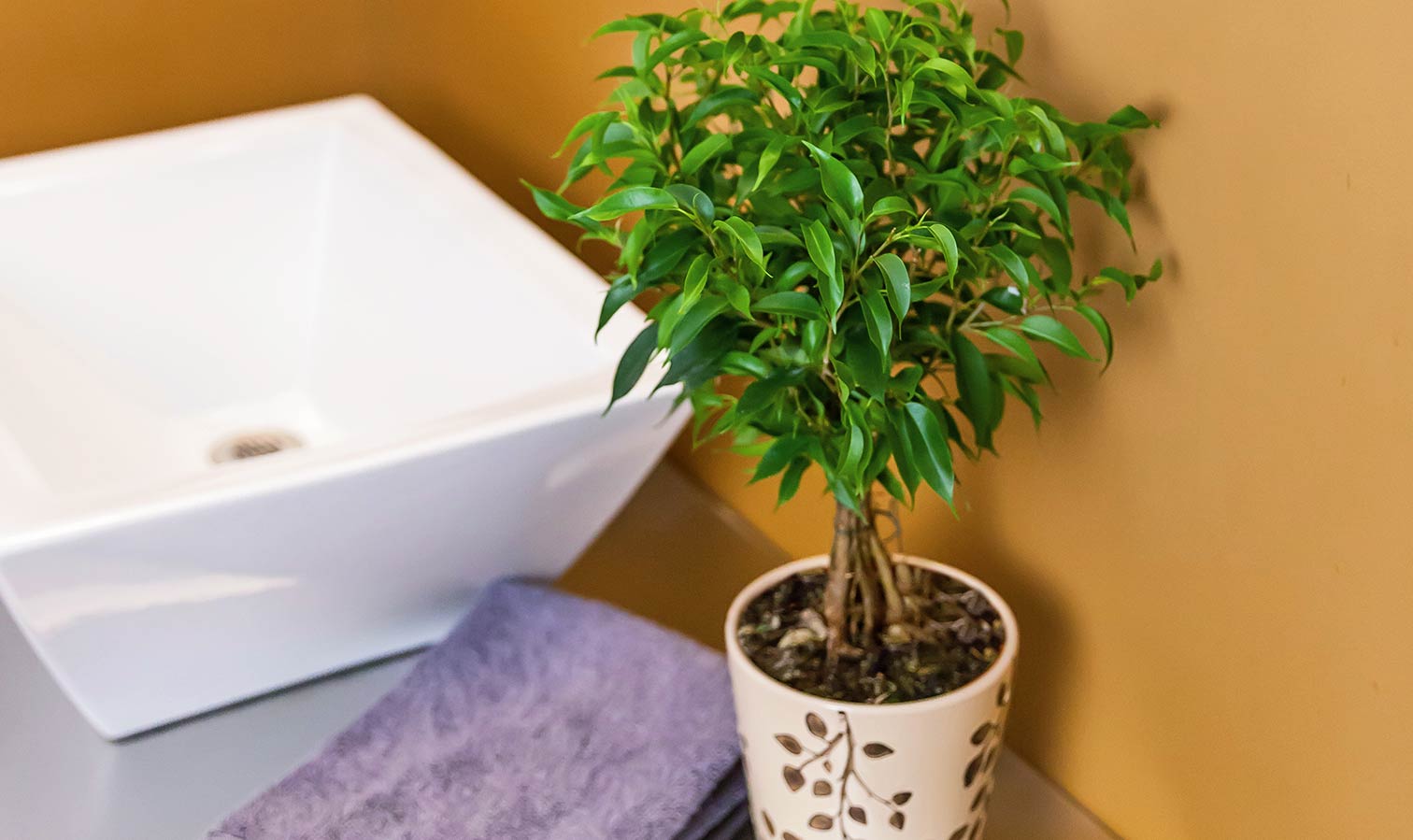
With their bundled trunk and drooping leaves, weeping figs have a unique appearance that can add intrigue to any room of your home. As a bonus, these miniature topiary trees are also easy to care for and have significant air purifying properties. That said, weeping fig owners do occasionally run into a few care issues.
Now for the good news: most of these common care issues have simple fixes. Here are a few of the most common problems your weeping fig might have — and what to do about them.
The Solution: Take a deep breath. Most of the time, when your weeping fig is losing leaves, it’s just a normal part of seasonal growth. Just like full-sized trees lose their leaves in the fall, your weeping fig will likely shed some leaves around the same time. While your leaf loss shouldn’t be as substantial as the trees outside, minimal leaf loss is nothing to worry about. Plus, since you control the environment of your weeping fig, you can help reduce leaf loss by increasing the humidity in the room and taking extra care not to overwater, which can exacerbate the problem.
The Solution: If you notice the leaves on your weeping fig have turned brown or have holes, your tree may be getting too much sunlight. Moving your plant to an area of the room that receives more indirect over direct light could help solve the problem. However, double check that your weeping fig isn’t suffering from a fungus, which can also cause brown leaves. In that case, you may need to use an insecticide.
The Solution: If the leaves of your weeping fig are yellow or curling, that’s a telltale sign that your tree isn’t getting enough water. Depending on how dry the soil is, you may need to soak the pot to rehydrate. Going forward, aim to water your weeping fig once per week with six ice cubes or ¾ cup of water.
The Solution: While the earliest signs of root rot might first show in discolored leaves, the best way to confirm it is to remove the tree from the pot and examine the roots. Do your best to keep the soil and root ball intact while you look for diseased roots, which will be brown in color and mushy to the touch. Root rot can be fairly serious, but replanting your tree in sterilized and well-drained soil can return it to good health.
The Solution: Pest problems are very rare in weeping figs, but they do happen. Since pests are most likely to show up on the leaves of your tree, take time to carefully inspect your plant. If you see growths, brown or purple spots, slimy bumps or tiny whiteflies, it’s time to act fast. Wear gloves and remove infected leaves or cut away infected branches with sterilized pruning shears. If the problem is severe, you may need an insecticide.
If any of these issues surface, don’t panic. Once you identify the problem and find the right solution, your weeping fig is likely to return to good health and should thrive for years to come.
For more care tips, download our free weeping fig care guide.

Copyright Just Add Ice® Orchids 2023